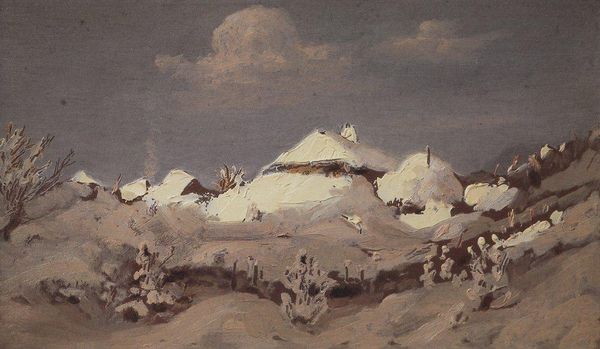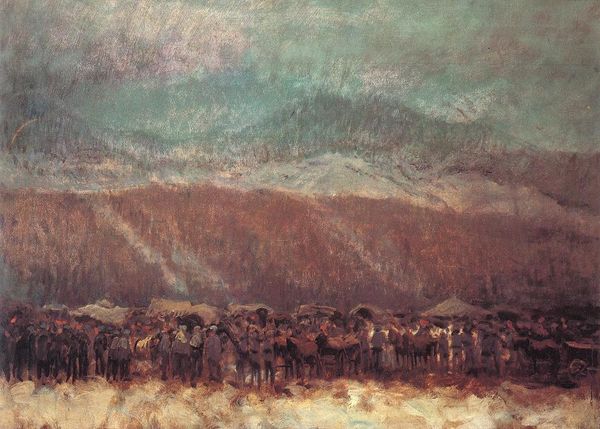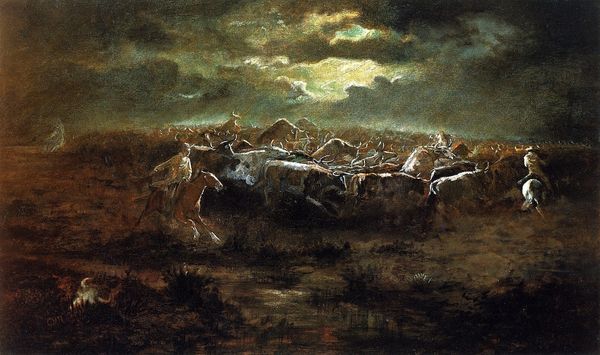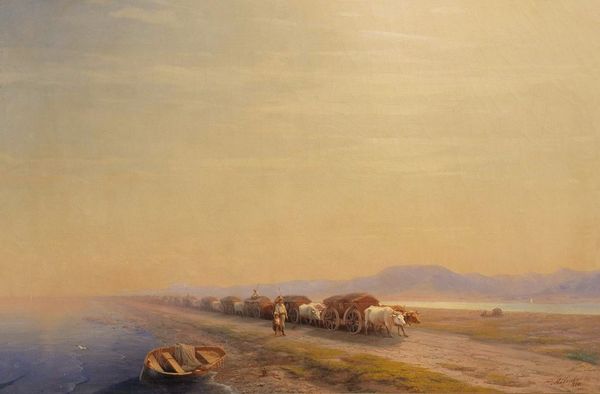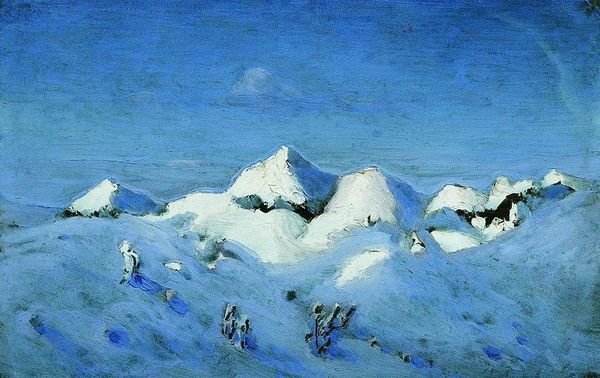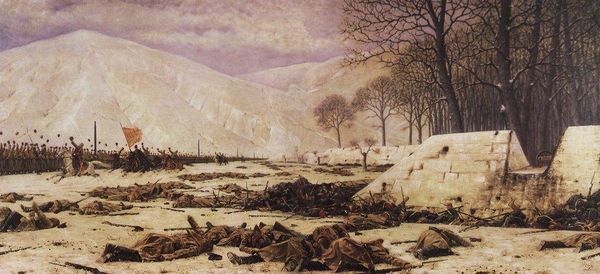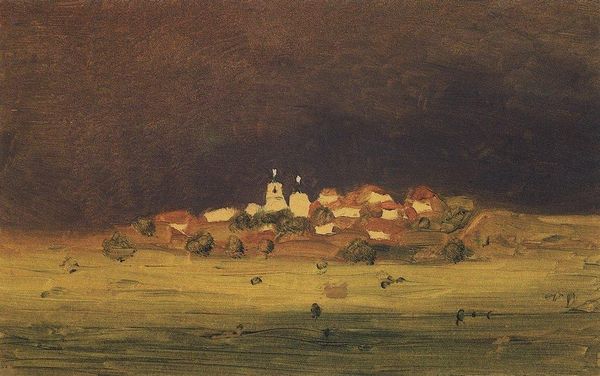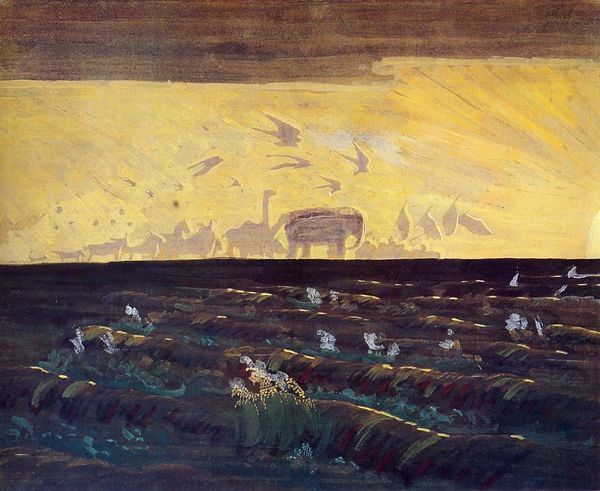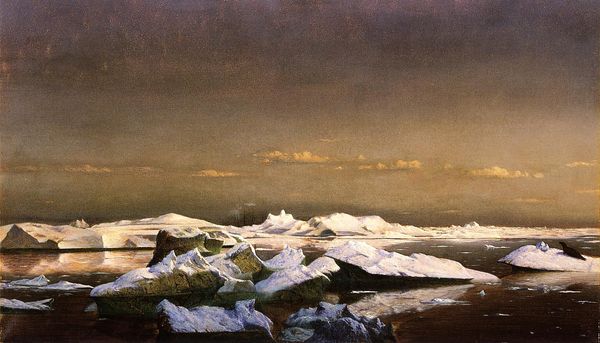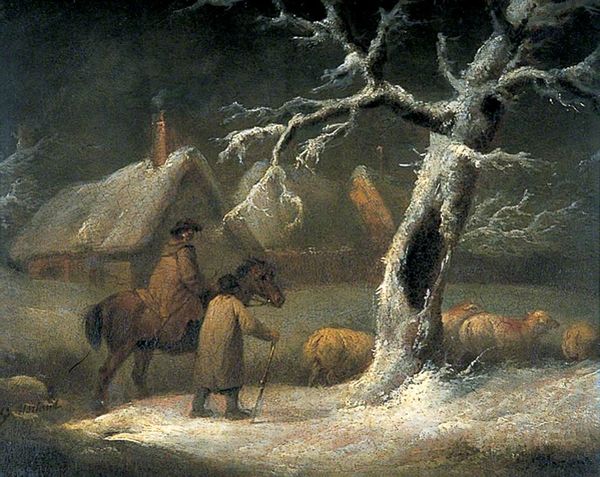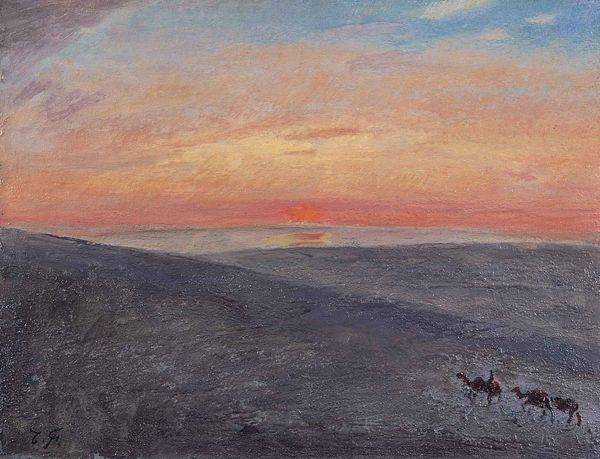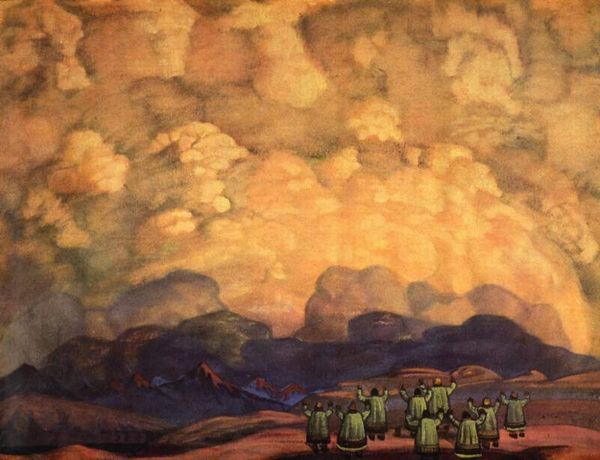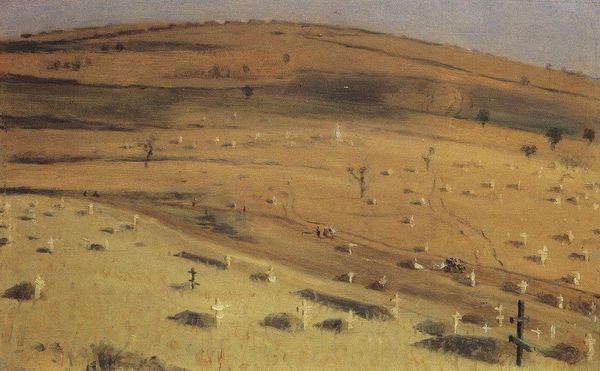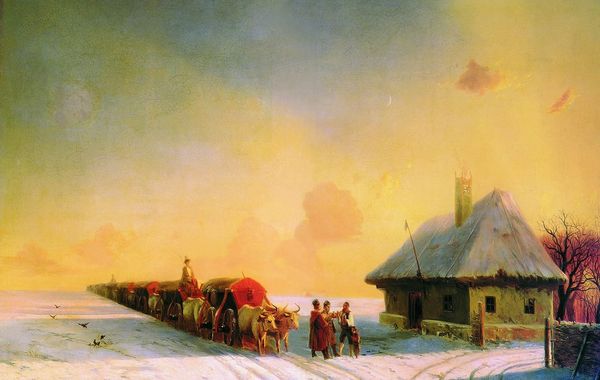
Copyright: Public domain
Curator: Looking at Arkhyp Kuindzhi's "Winter," painted in 1895, I'm immediately struck by the starkness. The high horizon line emphasizes the land. What's your take? Editor: Desolate. That's the first word that comes to mind. A pallid, cold sky looming over a hardscrabble terrain. It feels like a landscape reflecting societal hardships and perhaps the artist's own struggles in late 19th-century Russia. Curator: Absolutely. Notice the impasto technique. The thick application of oil paint, especially in the snow, suggests an interest in the materiality of the paint itself. This focus draws attention to the process of representation and invites us to consider labor as a vital aspect. Editor: I'm more drawn to how Kuindzhi positions that snow, not just as a beautiful blanket, but as a visual representation of imposed purity over a landscape, concealing potential for growth and challenging the existing social order that exploits the land. Curator: Interesting. He definitely moved away from traditional academic landscapes. Instead, he captures the specific material qualities of a place. This relates to changes in paint production and accessibility at the time, giving him options that artists before simply didn’t have. It democratizes painting, in a sense. Editor: I see that, and yet, the painting to me suggests something more insidious. Who has access to this land, really? The muted colors evoke the sense of environmental degradation that hits marginalized rural communities hardest. How does their labor actually connect to Kuindzhi's representation here? Curator: Good question. While Kuindzhi does use modern materials, we should still examine the potential alienation of rural laborers during this period, but within a wider economic framework involving urban industrialization. The consumption of art like this must also be questioned. Who benefits? Editor: Exactly. It prompts vital dialogue regarding ownership, representation, and even the gaze. We must interrogate the socio-political subtext in relation to not only labor but who benefits from it. It is never just the paint. Curator: Precisely, which forces us to look at artistic agency in relation to capital itself. Ultimately, seeing "Winter" pushes me to think about these evolving contexts of making. Editor: And, to me, to consider how images, like landscapes, get tangled in layers of power dynamics and force critical conversations regarding not only land, but lives.
Comments
No comments
Be the first to comment and join the conversation on the ultimate creative platform.
